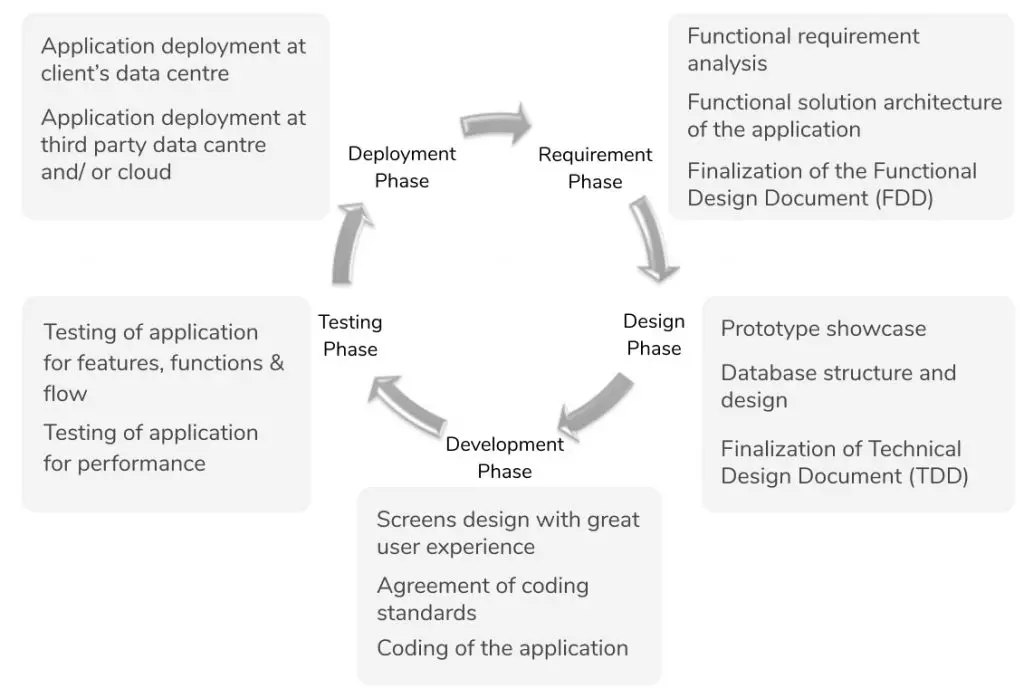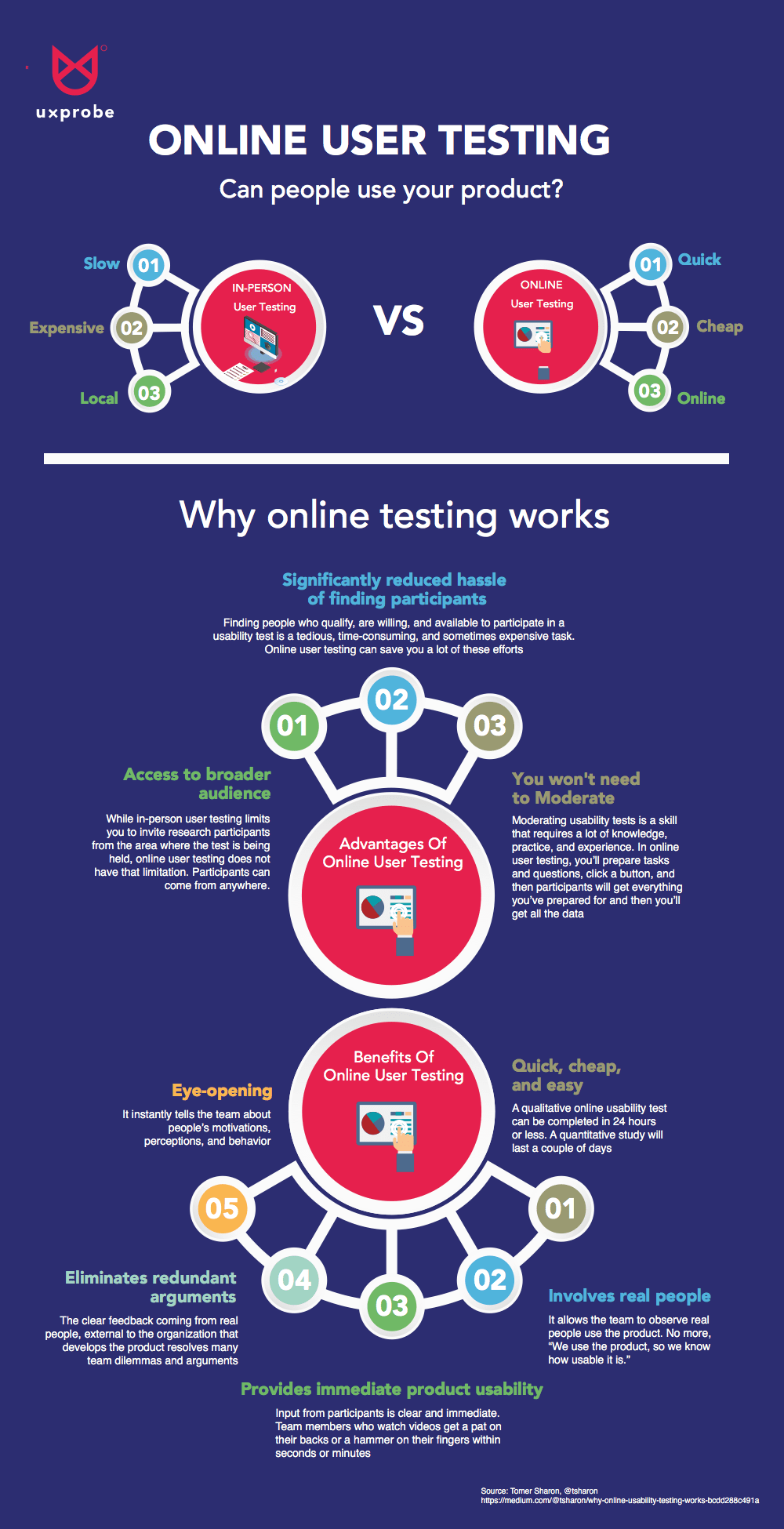The Importance of User Testing in Application Development

User testing, an integral part of the application development lifecycle, validates a product’s usability, functionality, and user experience (UX). It involves observing and gathering feedback from real users to identify potential issues and enhance the application’s overall quality.

Usability Evaluation: User testing enables developers to assess how effectively users can interact with the application. By observing their interactions and gathering their feedback, developers can identify areas that hinder usability, such as confusing interfaces, inaccessible menus, or unresponsive controls.

Functionality Validation: User testing ensures that the application meets its intended purpose and delivers the expected functionality. Users can provide insights into missing features, errors, or inconsistencies, allowing developers to address these issues before the application is released.
User Experience Optimization: User testing provides valuable feedback on the UX of the application. By understanding users’ preferences, emotions, and pain points, developers can refine the design, improve navigation, and enhance the overall user experience.
Early Problem Detection: Conducting user testing early in the development lifecycle helps detect potential issues that may not be evident during internal testing. This allows developers to address these issues promptly, saving time and resources that would otherwise be spent on addressing them later in the development cycle.
Reduced Risk of Failure: By identifying and resolving usability, functionality, and UX issues early on, user testing significantly reduces the risk of application failure after release. It ensures that the application meets the needs of real users and provides a positive user experience.
Improved Customer Satisfaction: Ultimately, user testing leads to improved customer satisfaction. By delivering applications that are easy to use, meet expectations, and provide a seamless user experience, developers can foster user loyalty and positive word-of-mouth.
Key Factors for Successful User Testing: To ensure successful user testing, consider the following:
- Recruit representative users: Select participants who reflect the target user group.
- Create realistic scenarios: Test the application under conditions that mimic real-world usage.
- Observe and record user interactions: Capture user actions, reactions, and pain points.
- Analyze feedback and iterate: Thoroughly analyze feedback and make necessary improvements to enhance the application.
Through rigorous user testing, developers can build applications that are both effective and delightful to use, ensuring a high level of user acceptance and satisfaction.## The Importance Of User Testing In Application Development
Executive Summary
User testing plays a crucial role in the application development process, enabling developers to gather valuable insights into user behavior, preferences, and pain points. By conducting user testing throughout the development lifecycle, businesses can significantly enhance the user experience, ensure product-market fit, and increase application adoption rates.
Introduction
In today’s competitive digital landscape, developing user-centric applications is essential for success. User testing provides a systematic and unbiased way to evaluate an application from the end-user’s perspective, uncovering potential issues and identifying areas for improvement. By continuously incorporating user feedback during development, businesses can ensure their applications are aligned with user needs and expectations.
Benefits of User Testing
Identify Usability Issues: User testing helps identify areas where users encounter confusion or difficulty using the application. It allows developers to pinpoint specific pain points and make necessary changes to improve navigation, interaction, and overall usability.
Enhance User Experience: By addressing usability issues and incorporating user feedback, user testing directly contributes to enhancing the overall user experience. A well-designed application that is easy to use and enjoyable to interact with promotes user engagement and customer satisfaction.
Validate Product-Market Fit: User testing enables businesses to validate whether their application aligns with the needs and preferences of the target market. By observing user behavior and gathering their feedback, developers can confirm if the application solves a real problem, meets user expectations, and has potential for success.
Improve Application Adoption: A seamless and enjoyable user experience is crucial for application adoption. User testing helps ensure the application is intuitive and meets user expectations, which increases the likelihood of users adopting and continuing to use the application.
Reduce Development Costs: By proactively identifying and addressing usability issues through user testing, businesses can avoid costly redesigns and rework later in the development cycle. Early investment in user testing can result in significant savings by preventing major oversights and reducing the need for extensive post-release fixes.
Conclusion
User testing is an invaluable asset in application development, offering numerous benefits that can significantly enhance the quality, usability, and user experience of the final product. By consistently incorporating user feedback, businesses can develop applications that align with market demands, reduce development costs, and achieve long-term success. User testing is an investment in the future of any application, ensuring it meets the evolving needs of users and remains competitive in the ever-evolving digital ecosystem.
Keyword Tags
- User Testing
- Application Development
- Usability
- UX Design
- User Experience
FAQs
1. When should user testing be conducted?
Throughout the development lifecycle, including early prototyping, iterative development stages, and before final release.
2. Who should participate in user testing?
Representative users from the target audience who possess varying levels of experience and technical skills.
3. How can user testing results be analyzed?
Through qualitative and quantitative analysis methods, including user interviews, observation notes, heatmaps, and surveys.
4. What are some common user testing methods?
Think-aloud protocols, structured interviews, focus groups, and remote usability testing.
5. How can businesses ensure the results of user testing are reliable?
By carefully recruiting participants, establishing clear testing goals, conducting user testing in a controlled environment, and triangulating results from multiple testing sessions.

User testing is a key element in the development of flawless applications. However, it is important not to stop there, user feedback should be taken into account during the whole development process. Engaging users in all the phases allow the creation of apps that truly meet their needs.
While user testing is indeed crucial, I find it flawed in its inability to fully represent the diverse user base an application might encounter once released. It’s like trying to predict the weather based on a single day’s forecast.
User testing is not merely an optional step, it’s a cornerstone of successful development. By involving users early on, you gain invaluable insights into their workflow, preferences and pain points. This knowledge empowers you to create apps that are not just functional, but truly user-centric.
The article claims user testing can prevent costly mistakes, but I argue that it’s just a band-aid solution. If the core design is flawed, no amount of testing can fully mitigate the risks. It’s like putting lipstick on a pig – it might look better, but it’s still a pig.
Oh, user testing is important, is it? How ironic that we’re reading about its significance in an article that’s riddled with typos and grammatical errors. Perhaps the developers should have done some user testing on their own writing before hitting publish.
Well, well, well, look who’s discovered the wonders of user testing. It’s like Columbus stumbling upon America – groundbreaking stuff, right? Wake up, people! User testing has been around for ages, and it’s not rocket science.
User testing? More like user torture! Imagine sitting through hours of people fumbling with your app, complaining about every little thing. It’s like watching a comedy show, but instead of laughing, you’re cringing in pain.
The article mentions various methods for user testing, but it fails to delve into their respective strengths and weaknesses. In-person testing may provide richer qualitative data, while remote testing offers cost-effectiveness. A more comprehensive analysis would aid developers in selecting the most appropriate method for their specific needs.
I wonder if there are any specific tools or platforms that are recommended for user testing. The article briefly mentions automated tools, but it would be helpful to have some concrete suggestions to explore. This would provide a practical starting point for developers interested in implementing user testing in their own projects.
While the benefits of user testing are undeniable, one potential concern is the cost and time it may require. Especially for startups or small teams with limited resources, it might be challenging to allocate significant time and budget to user testing. The article could have provided some guidance on how to approach user testing in a cost-effective manner.
The article emphasizes the importance of user testing throughout the development process, and I couldn’t agree more! By continually seeking user feedback, developers can ensure that their applications evolve in sync with the changing needs and preferences of their user base. This iterative approach is crucial for creating products that not only meet but exceed user expectations.
While user testing is undoubtedly valuable, it’s essential to recognize that it’s not a one-size-fits-all solution. The article could have explored different types of user testing methods, such as A/B testing or usability testing, and discussed the specific scenarios where each method is most appropriate. This would provide a more nuanced understanding of user testing and help developers select the most effective approach for their project.
The article presents user testing as an indispensable step in application development, but I find this claim to be somewhat exaggerated. While user testing can provide valuable insights, it’s important to acknowledge that it has limitations. User testing can be time-consuming and expensive, and it’s not always representative of the wider user base. In some cases, relying solely on user testing may lead to over-engineering and a loss of focus on core functionality.
I’m curious about the ethical considerations involved in user testing. The article mentions the importance of obtaining informed consent from participants, but it doesn’t delve into the potential risks or privacy concerns that may arise. A more thorough discussion of the ethical implications of user testing would be beneficial for developers who want to ensure they are conducting user testing in a responsible and respectful manner.